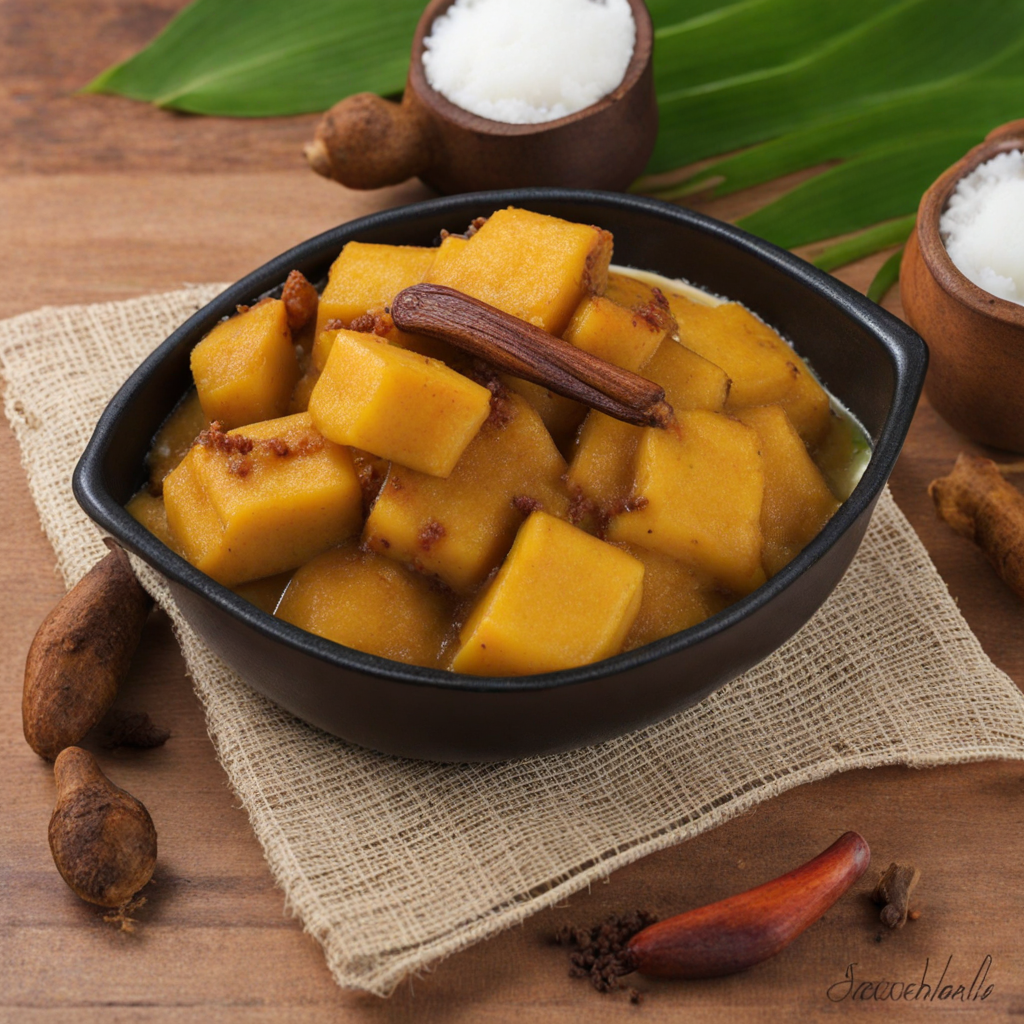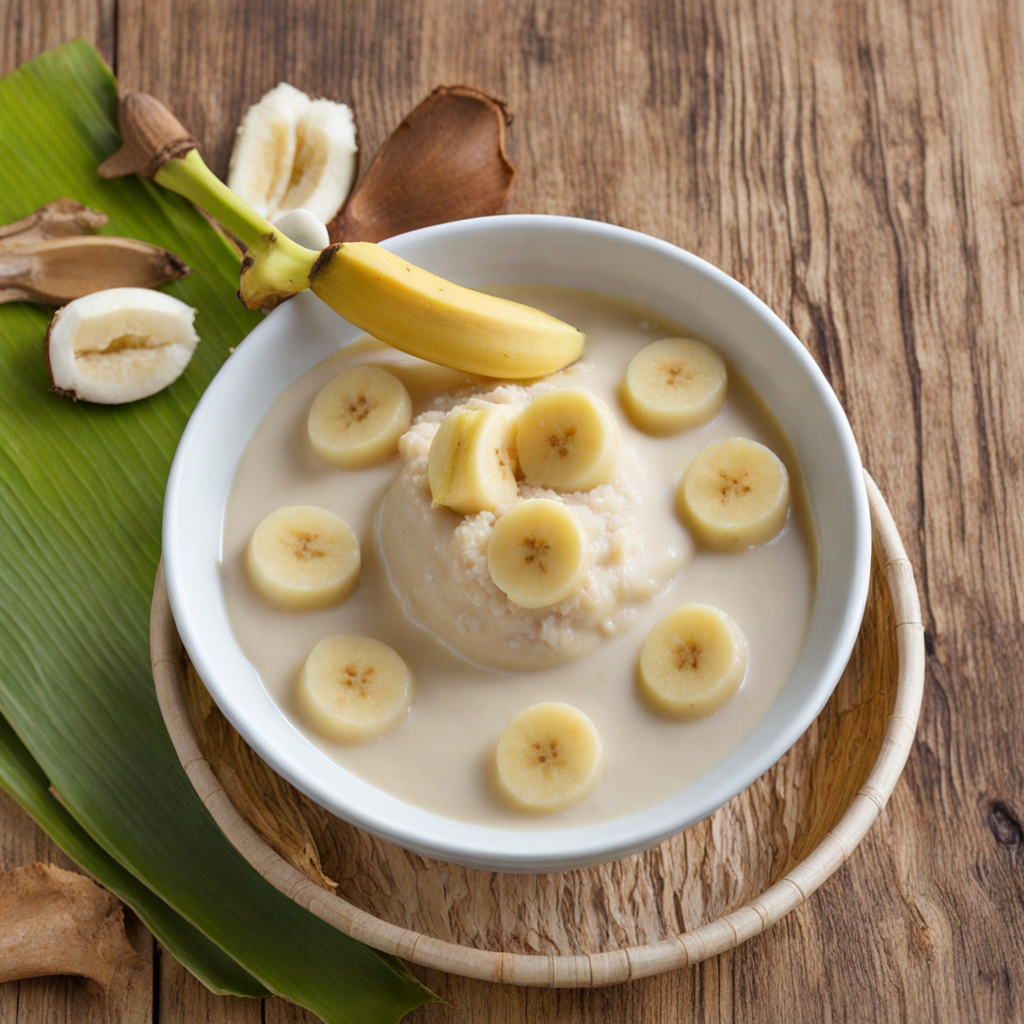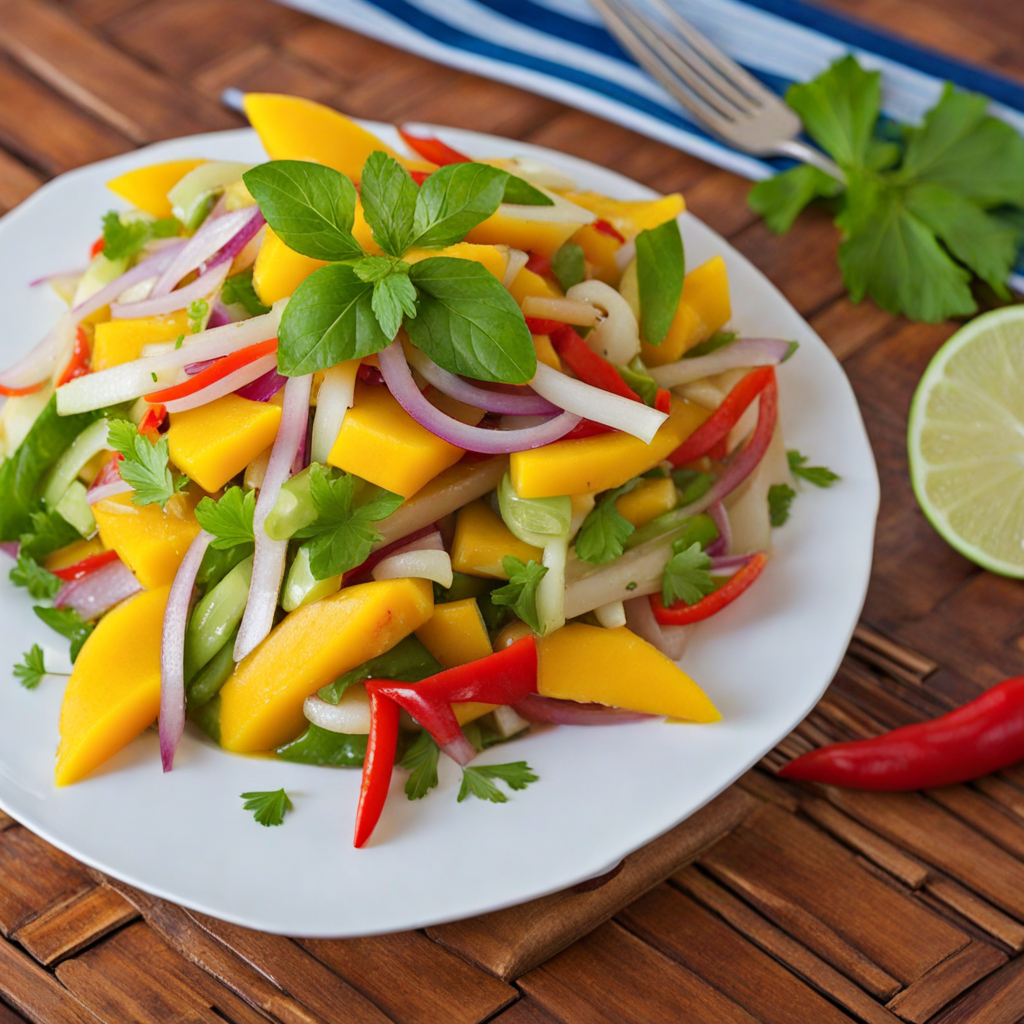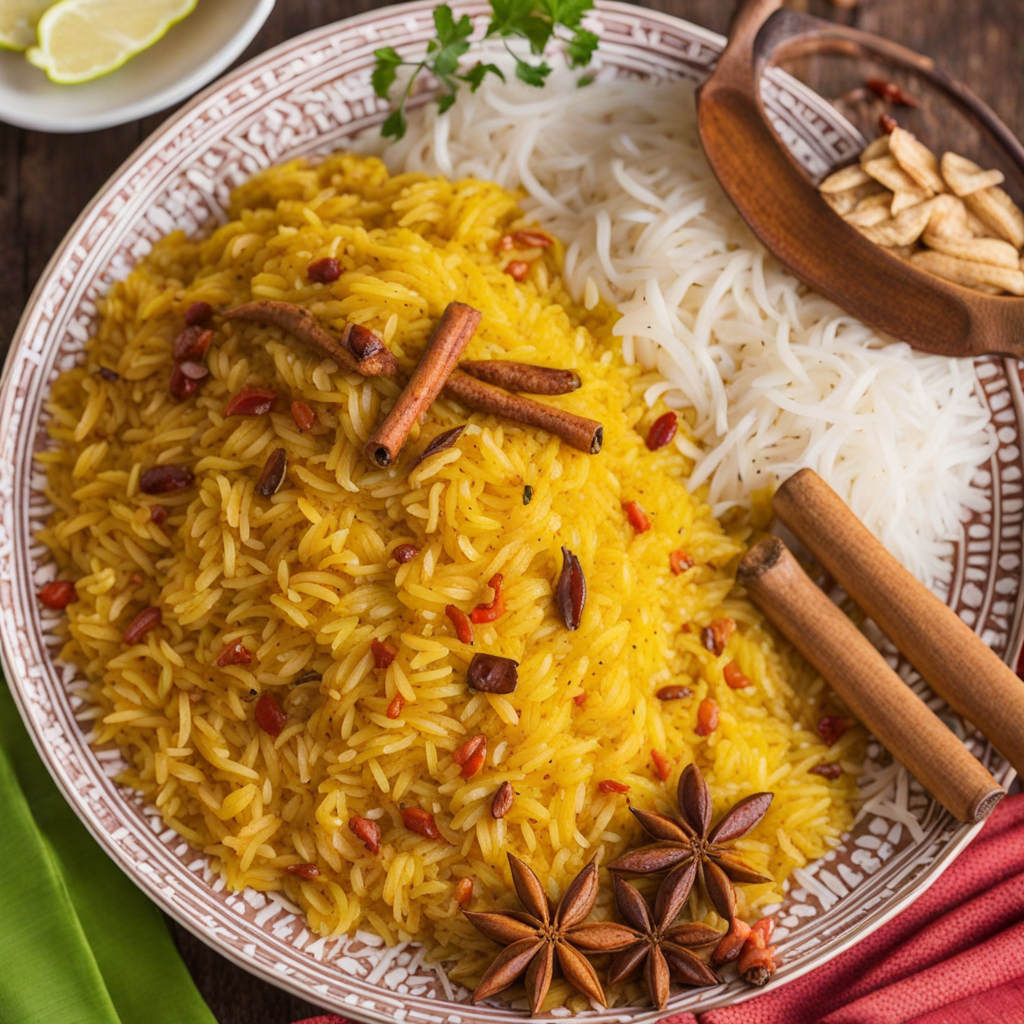Ladob
Ladob is a delightful dish from the Seychelles, renowned for its unique blend of flavors that reflect the islands' rich culinary heritage. This dish typically features a base of starchy ingredients, often made from ripe bananas or sweet potatoes, which are cooked until tender. The sweetness of the base is beautifully complemented by the addition of coconut milk, infusing the dish with a creamy, tropical richness that elevates every bite. The use of local spices and flavors, such as vanilla or cinnamon, adds an aromatic dimension that makes Ladob a truly enticing experience for the palate. What sets Ladob apart is its versatility; it can be enjoyed as a dessert or a savory dish depending on the preparation. In its sweeter form, Ladob can be served warm or chilled, often garnished with a sprinkle of grated coconut or a drizzle of honey for an extra touch of sweetness. Conversely, the savory variations may incorporate elements like fish or legumes, allowing the dish to showcase the abundance of fresh, local ingredients available in the Seychelles. This adaptability makes Ladob an appealing choice for those looking to explore different flavor profiles within the same culinary tradition. As you savor Ladob, you’ll find that each bite transports you to the sun-kissed shores of the Seychelles, with its vibrant colors and enticing aromas beckoning you to indulge further. The balance of sweetness and creaminess, combined with the warmth of spices, creates a comforting yet exotic dish that embodies the spirit of the islands. Whether you are celebrating a special occasion or simply looking to expand your culinary horizons, Ladob promises to be a memorable addition to your food repertoire.
How It Became This Dish
The History of Ladob: A Culinary Gem of Seychelles Ladob is a traditional dish from the Seychelles, a picturesque archipelago in the Indian Ocean known for its rich biodiversity and vibrant cultural tapestry. This delightful food item encapsulates the islands' unique blend of influences, showcasing the culinary heritage shaped by indigenous practices, colonial encounters, and the diverse communities that have settled here over centuries. #### Origins of Ladob The origins of Ladob can be traced back to the early inhabitants of Seychelles, who were primarily fishermen and coconut plantation workers. The islands were uninhabited until the late 18th century when French settlers arrived, bringing with them their culinary traditions. The combination of French techniques with local ingredients laid the groundwork for many Seychellois dishes, including Ladob. Ladob is primarily made from starchy ingredients like bananas, sweet potatoes, or cassava, which were staple foods among the local population. The use of these ingredients reflects the agricultural practices of the early settlers, who cultivated crops that thrived in the islands' volcanic soil. The dish is typically prepared by boiling or steaming the starchy base and then combining it with coconut milk, a vital ingredient that showcases the abundance of coconuts found on the islands. The addition of spices, such as vanilla or nutmeg, varies the flavor profile, reflecting the islands' rich natural resources. #### Cultural Significance Ladob is more than just a dish; it is a symbol of Seychellois identity and cultural heritage. It embodies the spirit of community and family, often served during festive occasions, family gatherings, and traditional celebrations. The preparation of Ladob often involves communal cooking, with family members coming together to create this beloved dish, thus reinforcing social bonds and cultural continuity. The significance of Ladob is also evident in its representation of the Seychelles’ history. It reflects the islands’ colonial past, particularly the French influence, while simultaneously embracing indigenous culinary practices. The dish serves as a reminder of the resilience and adaptability of the Seychellois people, who have blended diverse influences into a cohesive and unique culinary identity. As a staple in Seychellois cuisine, Ladob can be found in various forms across the islands. Each island has its own interpretation, with slight variations in ingredients and preparation methods. This diversity showcases the creativity and adaptability of the Seychellois people, allowing them to preserve their culinary traditions while also embracing innovation. #### Development Over Time Over the years, Ladob has evolved in response to changing tastes and the influence of globalization. In the past, the dish was primarily prepared using locally sourced ingredients. However, as tourism began to flourish in the Seychelles, chefs started experimenting with Ladob, presenting it in more contemporary styles. Gourmet restaurants and hotels began to incorporate the dish into their menus, often putting a modern twist on traditional recipes. The emergence of the tourism industry has also led to a greater awareness of Seychellois cuisine, with Ladob taking center stage in cultural festivals and food fairs. These events celebrate the islands’ culinary heritage, allowing locals and visitors to experience the flavors of Seychelles firsthand. The dish has become a symbol of the islands, attracting food enthusiasts eager to explore the rich tapestry of Seychellois flavors. In addition to its presence in restaurants, Ladob has also found its way into international cuisine, with chefs around the world experimenting with its ingredients and preparation. This globalization of the dish has led to its reinterpretation and adaptation, allowing it to reach new audiences and further solidify its place in the culinary world. #### Ladob in Contemporary Culture Today, Ladob continues to be a beloved dish in Seychelles, cherished by locals and visitors alike. It is often served as a dessert but can also be enjoyed as a savory dish, depending on the ingredients used. The versatility of Ladob has contributed to its enduring popularity, allowing it to be enjoyed in various settings, from casual family meals to elegant dining experiences. Social media has played a significant role in promoting Ladob and other Seychellois dishes to a global audience. Food bloggers and influencers have showcased the dish, highlighting its unique flavors and cultural significance. This exposure has not only contributed to the resurgence of interest in traditional Seychellois cuisine but has also encouraged younger generations to connect with their culinary roots. In recent years, there has been a renewed focus on sustainable and local sourcing of ingredients in Seychelles. As awareness of environmental issues grows, chefs and home cooks alike are increasingly prioritizing the use of fresh, locally grown produce in their culinary creations. This trend has led to a revival of traditional farming practices, ensuring that the ingredients for Ladob remain as vibrant and flavorful as they were in the past. #### Conclusion Ladob is more than just a dish; it is a testament to the rich history and cultural heritage of the Seychelles. Its origins reflect the islands' diverse influences, while its continued evolution speaks to the adaptability and resilience of the Seychellois people. As Ladob moves forward in the 21st century, it remains a cherished part of the culinary landscape, connecting generations and preserving the flavors of the past. In a world that is increasingly interconnected, Ladob serves as a delicious reminder of the importance of cultural heritage and the enduring power of food to bring people together. Whether enjoyed on the pristine beaches of Seychelles or in a far-off city, Ladob will always carry the essence of the islands—a celebration of community, history, and the joy of shared meals.
You may like
Discover local flavors from Seychelles







